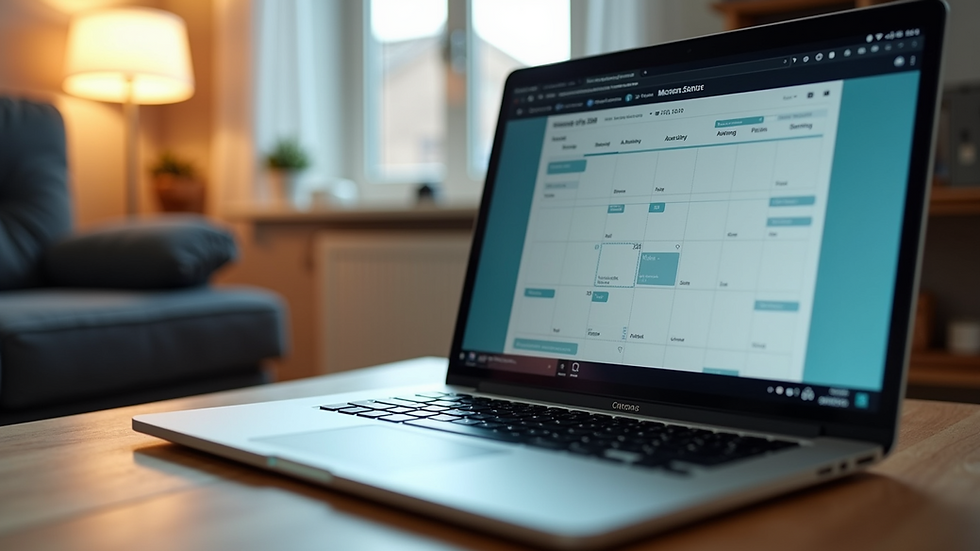How to Plan Social Media Scheduling Effectively
- Michael Foster

- Oct 7
- 4 min read
If you’ve ever felt overwhelmed by the constant need to post on social media, you’re not alone. Managing your online presence can feel like juggling flaming torches while riding a unicycle. But here’s the good news: with the right approach and tools, you can take control, save time, and grow your business sustainably. Today, I’m going to walk you through how to plan social media scheduling effectively, using smart strategies and the best social media planning tools available.
Ready to make your social media work for you, not the other way around? Let’s dive in.
Why You Need Social Media Planning Tools
Imagine trying to bake a cake without a recipe or ingredients organised. You’d probably end up with a mess, right? The same goes for social media. Without planning tools, you risk inconsistent posting, missed opportunities, and wasted effort.
Social media planning tools help you:
Organise your content calendar so you know what to post and when.
Schedule posts in advance, freeing up your time for other important tasks.
Analyse performance to see what’s working and what’s not.
Collaborate easily if you have a team or external partners.
Some popular tools include Buffer, Hootsuite, Later, and of course, Purple Yak’s own social media planning solutions tailored for entrepreneurs and business owners.
Using these tools means you can focus on creating great content and engaging with your audience, rather than scrambling to post last minute.

What is social media scheduling?
Social media scheduling is the process of planning and setting your posts to go live at specific times in the future. Instead of manually posting every day, you prepare your content ahead of time and use a tool to publish it automatically.
Why is this so powerful? Because it:
Keeps your brand visible consistently.
Helps you reach your audience when they’re most active.
Allows you to maintain a balanced mix of content types (promotional, educational, entertaining).
Reduces stress by batching your work.
For example, you might spend a couple of hours on Monday creating all your posts for the week, then schedule them to go out at optimal times. This way, you’re not tied to your phone or computer all day.
Scheduling also gives you the chance to plan around important dates, campaigns, or product launches, ensuring your messaging is timely and relevant.

How to Create an Effective Social Media Schedule
Now that you understand the basics, let’s get practical. Here’s a step-by-step guide to creating a social media schedule that works for your business:
1. Define Your Goals
What do you want to achieve? More followers, increased website traffic, higher sales, or better brand awareness? Your goals will shape your content and posting frequency.
2. Know Your Audience
When are they online? What content do they engage with? Use insights from your social media platforms or tools like Google Analytics to find out.
3. Choose Your Platforms
Not every platform suits every business. Focus on where your ideal customers hang out. For example, Instagram and Facebook might be great for visual brands, while LinkedIn suits B2B businesses.
4. Plan Your Content Mix
Variety keeps your audience interested. Mix:
Educational posts
Behind-the-scenes glimpses
Customer testimonials
Promotions and offers
Interactive content like polls or questions
5. Decide Posting Frequency
Quality over quantity is key. Start with a manageable number of posts per week and adjust based on engagement and resources.
6. Use a Content Calendar
Map out your posts weekly or monthly. This helps you spot gaps, avoid repetition, and align with campaigns or events.
7. Schedule Your Posts
Use your chosen social media planning tools to set your posts live automatically. Remember to review and tweak as needed.
8. Monitor and Adjust
Track performance regularly. Which posts get the most likes, shares, or comments? Use this data to refine your strategy.

Tips for Staying Consistent and Engaged
Consistency is the secret sauce of social media success. But it’s not just about posting regularly; it’s about staying connected with your audience.
Set reminders to check and respond to comments and messages.
Engage with others by liking, commenting, and sharing relevant content.
Repurpose content to save time – turn a blog post into multiple social media snippets.
Stay flexible – if something timely comes up, don’t be afraid to adjust your schedule.
Celebrate milestones and share your journey authentically.
Remember, social media is a conversation, not a broadcast. Your audience wants to feel heard and valued.
Wrapping Up Your Social Media Scheduling Journey
Planning your social media doesn’t have to be a chore. With the right mindset, clear goals, and effective tools, you can create a schedule that supports your business growth and frees up your time.
If you’re ready to take the next step, explore social media scheduling options that fit your unique needs. Whether you’re just starting out or scaling up, a well-planned social media strategy can be a game-changer.
So, what’s stopping you? Grab your calendar, pick your tools, and start scheduling your way to success today!



Comments